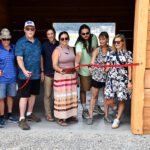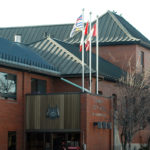Home »

Agriculture public engagement session added in Cranbrook
The B.C. Ministry of Agriculture today announced that Cranbrook has been added for an in-person public engagement session, scheduled so more people can have their say on how to encourage farming and protect farmland throughout the province.
The Cranbrook session will be held on Nov. 5. The government media release did not state exactly where in the city it will occur.
British Columbians are encouraged to share their insights and opinions on how to best address the following challenges:
* supporting farmers and ranchers in the Agricultural Land Reserve (ALR) to expand and diversify their businesses;
* helping new or young farmers become established on the land and in business; and
* ensuring there is flexibility for residential options while prioritizing agriculture in the ALR.
The first five sessions took place on Vancouver Island, Delta, Dawson Creek, Prince George and Kelowna. An additional meeting is scheduled in Castlegar on Oct. 30 and another in Kamloops on Nov. 14.
Since there have been recent changes by government to strengthen the ALR and Agricultural Land Commission (ALC), the ministry is hosting eight in-person sessions, along with the ALC, throughout B.C. to discuss the purpose of the changes. The sessions will also focus on gathering input from people on the three stated challenges with the goal of supporting B.C. farmers and ranchers.
The number of in-person engagement sessions was increased as the result of feedback heard at the 2019 Union of BC Municipalities Conference and from farmers and property owners in the ALR.
The engagement period runs from Sept. 19 to Nov. 15. An engagement summary report will then be prepared and made public.
The ALR was established in 1973 because thousands of acres of the province’s limited farmland were being lost to development every year. The ALR includes 46,159 square kilometres of B.C., which are preserved for agricultural use. This area is equivalent to five per cent of B.C.’s total land base.
e-KNOW







